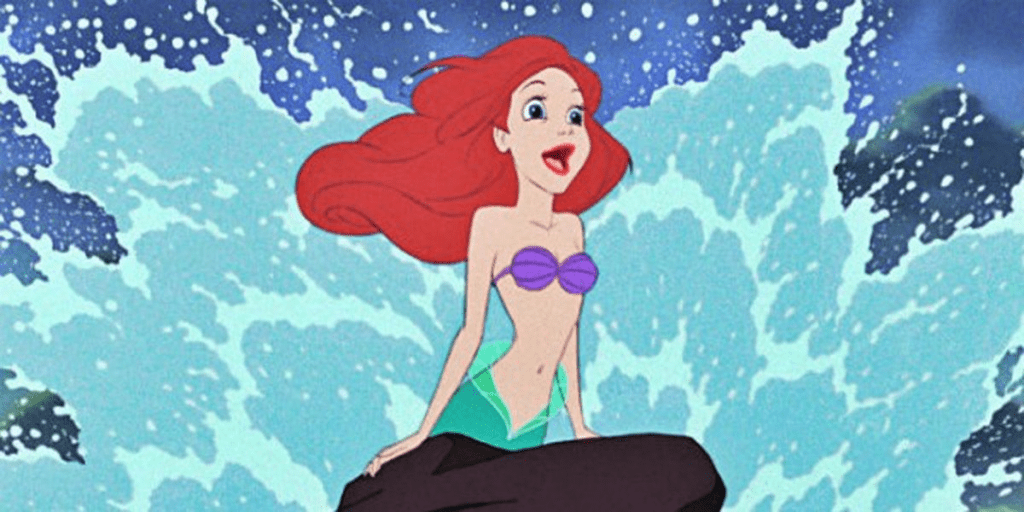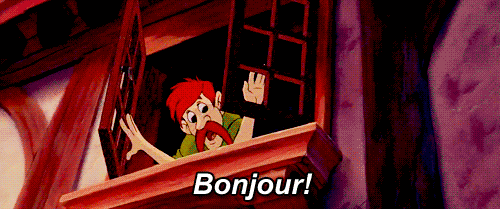If you grew up in the golden age of Disney animation, you probably didn’t think much about the people who made our beloved childhood classics. It seemed like The Little Mermaid, Beauty and the Beast, and Aladdin simply sprang from Disney’s seemingly inexhaustible supply of brilliance. But in reality, those three films, and the animation renaissance they inspired, are the creative legacy of one man: Howard Ashman.
Ashman, who is the subject of a new documentary called Howard, resurrected Disney animation at a time when it had been essentially left for dead. His leadership and his genius as a lyricist revolutionized an entire medium, despite the fact that he lived to see only one of his films completed.
Howard Ashman was a singular human being, but he faced obstacles familiar to any leader: a department on the brink of collapse and superiors with limited faith in his vision. His career has lessons for any manager about how to win the trust of your team, stick to your principles, and create lasting change.
He Won the Loyalty of a Company in Crisis
To fully appreciate Howard Ashman’s achievements, one must first understand that he inherited a department in disarray. Disney animation, once the crown jewel of the Disney empire, had suffered from decades of critical and commercial flops. The documentary Waking Sleeping Beauty paints a picture of the situation. It relates how the animators were kicked out of their offices on the Disney lot and moved to a dilapidated building. Their most recent project, The Black Cauldron, was a humiliating bomb and was beaten at the box office by The Care Bears Movie.
The team Howard Ashman was about to lead was in revolt. The department was split between an old guard of animators still clinging to the legacy of Walt Disney, and a new crop of upstarts with a lot of energy but no direction. They drew merciless caricatures of executives and undermined and mocked them by writing up fake memos.
Jeffrey Katzenberg took control of Disney’s film division in 1984 and attempted to impose order, but the animation team felt he didn’t respect their work. Katzenberg held 8 a.m. meetings on Sunday mornings and at one point said he was more interested in money than Oscars. Veteran animator Roger Allers recalled the moment as “absolutely the worst thing to tell a room full of artists. It was so discouraging.”
In 1986, Katzenberg reached out to Howard Ashman to write lyrics, who quickly showed an interest in spearheading an adaptation of The Little Mermaid. Ashman himself was reeling from the devastating failure of his most recent project, and he was an unknown quantity for the animation department. As Disney producer Don Hahn described, “He came from the outside: Jewish, gay, Baltimore, theater. Nothing in common with us.”
How would any leader, in any business, turn such a crisis around? Ashman did it by immediately proving his dedication to his team.
He told them how excited he was to be working in animation and communicated his faith in the medium and in the department. After years of being treated like the company’s black sheep, the animation team was immediately impressed by a leader who showed them respect. Moreover, it made them want to rise to Ashman’s high standards.
Want to be a better manager with a happier, healthier and more effective team?
Sign up for a free coaching consultation with Uptick Co-founder Chris Zaugg to improve your team’s effectiveness by connecting relationally.
The Lesson For Leaders
Before you can ask your team to believe in you, you have to prove you believe in them and in your work. That’s especially vital when you’re joining a team that’s had management problems in the past, or starting at a new organization where no one knows you. In those situations, it’s easy to come off as a drill sergeant or an uncertain newcomer, but neither route will win you respect. Instead, take time in your first team meetings and one-on-ones to emphasize your passion for the work you’re doing. Passion combines both vulnerability and strength, and modeling it is the fastest way to earn the trust of a new team.
He Got His Team to Share His Vision
Howard Ashman kicked off his work on The Little Mermaid with a now-legendary presentation to the crew. In it, he laid out his vision for the future of Disney animation, informed by his experiences in the theater.
Kirk Wise, an animator and director, discussed the impact of this presentation in Waking Sleeping Beauty. “He did kind of an oral history of the evolution of the American musical and the evolution of the Disney animated film. He sort of did these two parallel tracks and showed how they intertwined. And he had all these examples and all these songs that he played . . . that bolstered his point that these two types of storytelling were made for each other, and he sold us on it.”
Animator Glen Keane was so inspired by Ashman’s early demo of “Part of Your World,” that he walked away saying, “I have to do Ariel. I feel it in my heart.”
Ashman’s ability to get his team on board with his ideas is an example for every manager trying to overcome resistance to change. Ashman’s gift was not only his unique vision but also his ability to turn that vision into a set of standards that the rest of the department adopted and that became signature parts of the Disney brand. For example, Ashman introduced Disney to the “I Want” song, in which the heroine sings her deepest desire and wins the audience’s loyalty. That concept was born with “Part of Your World,” and it’s now part of the Disney animation gospel that lives on in songs like Moana’s “How Far I’ll Go.”


In an interview, Ashman laid out his creative philosophy of a strong leader who draws out the talents of strong collaborators: “I do believe that most cohesive works of art are the product of basically one sensibility, and then other people with other talents become extensions of that basic sensibility.”
The Lesson For Leaders
Don’t be a paint-by-numbers manager, trying to replicate the success of people who came before you. Come up with your own vision for how your team should operate, grounded in research, experience, and personal conviction. Then (and this is the part a lot of managers skip over) explain that vision to your team. Show them how and why it will work, and then lead them in developing practices and standards to support it, even when you’re no longer at the wheel.
Just as critically, make sure your ideas inspire your team, instead of drowning them out. That means that when a team member is excited about an idea, trust them enough to execute it and don’t stand in their way by micromanaging. Remember, Howard Ashman coached actors on how to sing their lines; he didn’t sing for them.
He Made a Huge Impact, Even with Limited Power
When we talk about great business leaders, we often fall back on examples like Steve Jobs: uncompromising individuals who demanded total control of their teams. But Howard Ashman’s story is both more relatable and more inspiring to managers because he made sweeping changes despite having a limited amount of authority and autonomy. Ashman wasn’t an executive or even a director, yet Roy Disney himself said that Ashman’s influence on the company was comparable to the fabled Walt.
Like most managers, Ashman didn’t lead his own company; he joined Disney, which had its own brand and culture, and he had to operate within that framework. Sometimes, that meant fighting for his convictions. For instance, Katzenberg felt that “Part of Your World” didn’t test well with audiences, and he wanted to cut it from the film. But Ashman stood his ground, and the song became one of The Little Mermaid’s most iconic moments.
On other occasions, he was less certain of winning approval from his superiors. He was reportedly very nervous to show Disney executives the six-minute opening medley to Beauty and The Beast, certain they would nix it. (Thankfully, by this time they had learned to trust his judgment, and the song stayed.)

Howard Ashman was a case study in how managers can create change from the middle of an organization. Despite his occasionally mercurial nature, he won the loyalty of his team and the respect of his bosses, and, ultimately, collaboration was at the heart of his work.
The Lesson For Leaders
Make peace with the fact that you don’t have complete control of your organization, and that compromise is part of your job description. Pick the issues that you’re willing to fight for, but don’t make every disagreement a line in the sand.
Howard Ashman: Enduring Example of Great Leadership
Howard Ashman succumbed to AIDS in 1991, while Beauty and the Beast was still in production. He was 40 years old and had been at Disney for less than 10 years. Yet, in that time, “he revolutionized, in every way, what we did,” according to Don Hahn.
Beauty and the Beast became the first animated film to be nominated for an Academy Award for Best Picture. His colleagues dedicated the film to him with a moving tribute that read: “To our friend, Howard, who gave a mermaid her voice and a beast his soul. We will be forever grateful.”

Source
On your worst days as a manager, you may feel you don’t have the power, talent, or time to make a difference in your job. But that’s a good moment to remember Howard Ashman, whose belief in himself and his team forged a legacy that continues to this day.
Want to be a better manager with a happier, healthier and more effective team?
Sign up for a free coaching consultation with Uptick Co-founder Chris Zaugg to improve your team’s effectiveness by connecting relationally.


